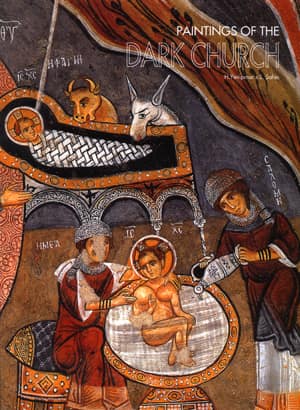112 pp, with many color pictures, hb, in English.
After an introduction of the historical background of the Christian art in Cappadocia the book deals with the architecture and paintings of the Karanlık Kilise, popularly known as the Dark Church, situated in the Göreme valley. The church and its paintings date from mid-tenth century. These wall paintings are known as the best-surviving examples of the late Byzantine art. In addition to the description of all of the major wall paintings in Karanlık Kilise, the Byzantine painting tradition of the period has also been dealt with. The consistency of its repertoire, style and colours indicate that the decoration of the Dark Church was done at a single phase of painting and immediately after it was excavated. Although there is no document surviving about the way that the Cappadocian rock-churches were decorated, the Middle Byzantine literature is rich enough to construct the general progress of the work. The paintings of the Dark Church were applied on a dry plaster of lime mixed with tufa and sand and with chopped straw as a binder. The only areas where this technique (secco or dry fresco) was replaced by the fresco technique were the heads of the figures of Christ, the Virgin and St John the Baptist in the main apse.




